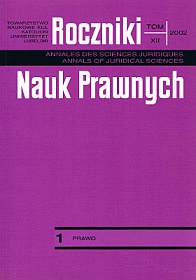The Systems of the Relation between the State and the Church in France
Abstract
The author characterizes the systems of the relation between the Church and the state, the systems which functioned in France in the past and which are currently working, The Church-State relation had long and often dramatic past. Starting from Frankonian Caesaropapism in its Gallican version, when the caesar usurped the power to make laws in church matters, through the period of a strong liaison between the altar and the throne during the ancien régime, when the privileged position of the Catholic Church was bought by her resignation of some rights on behalf of political power.
The period of the French Revolution is the time of a breach from the many-aged tradition, the time of religion freedom and ruthless persecution of the Church. The Napoleonic concordat had reinstated the rights of the Church, but did not ensure her with complete freedom.
In the beginning of the twentieth century the Church was divided from the State, a division that was characterized by the privatization of religion and the ban on any external manifestation of religious beliefs in public life.
After the Second World War, due to a profound reflection on the basic philosophical assumptions of a lay state, a consensus between religious and political communities could be reached.
At the moment there are two versions of a lay state in France: the system of a lay state in its quasi-concordat version and the system of a lay state based on a coordinated separation.
Copyright (c) 2002 Roczniki Nauk Prawnych

This work is licensed under a Creative Commons Attribution-NonCommercial-NoDerivatives 4.0 International License.


